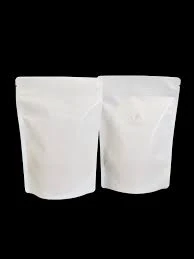- Afrikaans
- Albanian
- Amharic
- Arabic
- Armenian
- Azerbaijani
- Basque
- Belarusian
- Bengali
- Bosnian
- Bulgarian
- Catalan
- Cebuano
- chinese_simplified
- chinese_traditional
- Corsican
- Croatian
- Czech
- Danish
- Dutch
- English
- Esperanto
- Estonian
- Finnish
- French
- Frisian
- Galician
- Georgian
- German
- Greek
- Gujarati
- haitian_creole
- hausa
- hawaiian
- Hebrew
- Hindi
- Miao
- Hungarian
- Icelandic
- igbo
- Indonesian
- irish
- Italian
- Japanese
- Javanese
- Kannada
- kazakh
- Khmer
- Rwandese
- Korean
- Kurdish
- Kyrgyz
- Lao
- Latin
- Latvian
- Lithuanian
- Luxembourgish
- Macedonian
- Malgashi
- Malay
- Malayalam
- Maltese
- Maori
- Marathi
- Mongolian
- Myanmar
- Nepali
- Norwegian
- Norwegian
- Occitan
- Pashto
- Persian
- Polish
- Portuguese
- Punjabi
- Romanian
- Russian
- Samoan
- scottish-gaelic
- Serbian
- Sesotho
- Shona
- Sindhi
- Sinhala
- Slovak
- Slovenian
- Somali
- Spanish
- Sundanese
- Swahili
- Swedish
- Tagalog
- Tajik
- Tamil
- Tatar
- Telugu
- Thai
- Turkish
- Turkmen
- Ukrainian
- Urdu
- Uighur
- Uzbek
- Vietnamese
- Welsh
- Bantu
- Yiddish
- Yoruba
- Zulu
Exploring the Properties and Applications of PLA Polylactic Acid for Sustainable Solutions
The Rise of PLA Polylactic Acid and Its Applications
Polylactic Acid (PLA) has emerged as one of the frontrunners in the field of biodegradable plastics, captivating the attention of researchers, manufacturers, and environmentally-conscious consumers alike. Derived from renewable resources such as corn starch or sugarcane, PLA is synthesized through the fermentation of carbohydrates, resulting in a biodegradable polymer that serves as a sustainable alternative to conventional petroleum-based plastics.
One of the most compelling advantages of PLA is its environmental impact. Traditional plastics, such as polyethylene and polypropylene, can take hundreds of years to decompose, leading to significant environmental pollution and harm to wildlife. In stark contrast, PLA can decompose within a few months under optimal industrial composting conditions, significantly reducing the burden of plastic waste. By opting for PLA, consumers can contribute to a decrease in landfill overflow and plastic pollution, making it an appealing choice for eco-conscious individuals and businesses.
The Rise of PLA Polylactic Acid and Its Applications
Moreover, PLA is not limited to everyday consumer products; it also finds applications in the medical field. PLA is biocompatible, meaning it can exist in harmony with living tissues without causing adverse reactions. This property makes it a viable option for medical implants, sutures, and drug delivery systems. Over time, PLA implants can degrade in the body, eliminating the need for surgical removal and providing a significant advantage over traditional materials. As the medical industry seeks innovative ways to improve patient outcomes and reduce waste, PLA presents an exciting opportunity.
pla polylactic acid

However, despite its benefits, the production of PLA is not without challenges. The primary feedstock for PLA production, corn, has sparked debates regarding food versus fuel. The cultivation and processing of crops for bioplastics can divert resources from food production, potentially contributing to food insecurity in regions where grain supplies are already strained. Additionally, the energy-intensive nature of PLA production and the need for industrial composting facilities pose logistical hurdles. Addressing these issues requires a balanced approach that values both environmental sustainability and food security.
Another aspect to consider is the end-of-life management of PLA products. While PLA can decompose under industrial composting conditions, proper facilities are not widely available in many regions. As a result, PLA products often end up in landfills where decomposition is significantly slowed. This highlights the importance of developing robust recycling and composting systems to ensure that PLA can reach its full potential as a sustainable alternative to traditional plastics.
Despite the challenges, the growth of PLA has spurred innovation in materials science and engineering. Research is ongoing to enhance the properties of PLA, making it suitable for more specialized applications, including textiles and electronics. Advances in blending PLA with other biodegradable materials aim to improve its mechanical strength and thermal resistance, further expanding its use cases.
In conclusion, Polylactic Acid represents a hopeful stride towards a more sustainable future. Its biodegradability, versatility in applications, and potential for reducing plastic waste position PLA as a valuable alternative to conventional plastics. However, to maximize its benefits, it is essential to address the challenges associated with its production and end-of-life management. By fostering a collaborative effort between industry, policymakers, and consumers, PLA can play a crucial role in the transition toward a circular economy, where sustainability and innovation go hand in hand.













